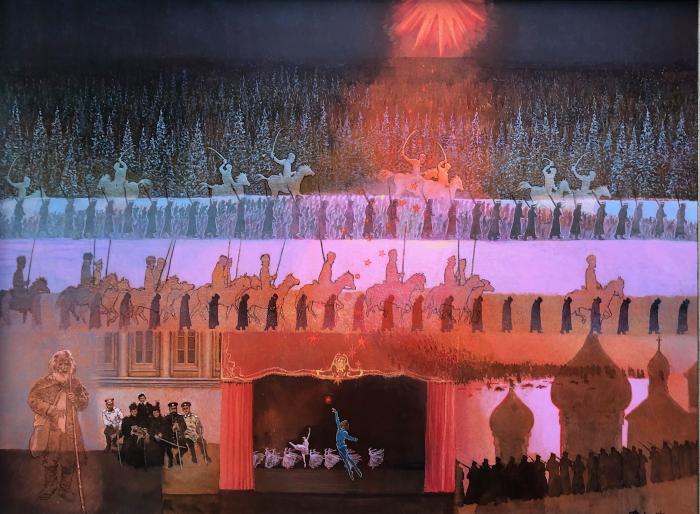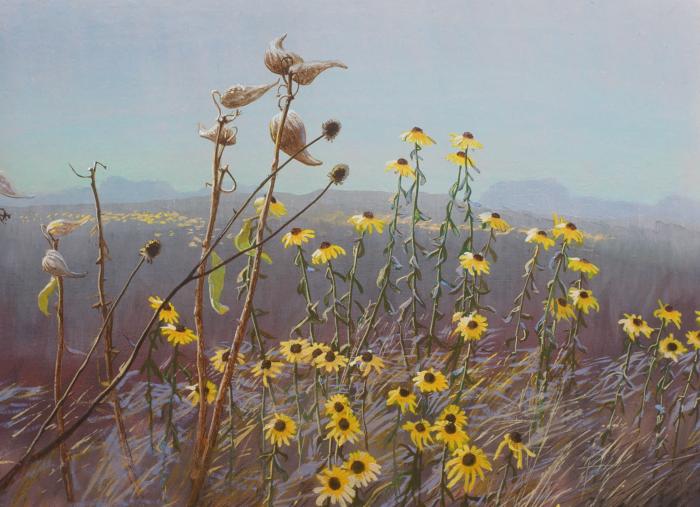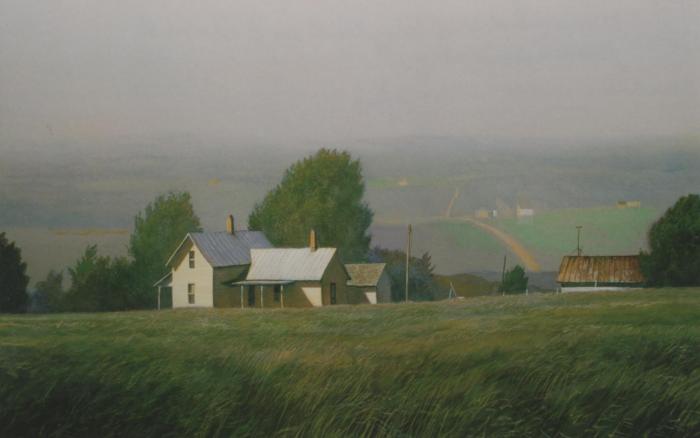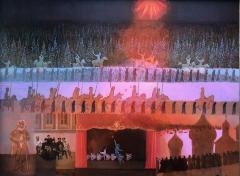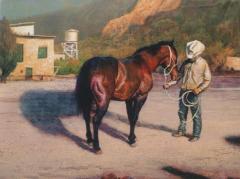“Russian Tragedy,” painted in 1979, clearly demonstrates Armand’s continuing desire to paint more philosophically. Based on interviews with both Armand and the owners of the painting, the following is the author’s explanation of Armand’s intentions with this painting. Here he depicts the suffering that man inflicts upon man in his quest for power. During the Russian Revolution Cossacks with sabers raised are overseeing a death march of millions through the Siberian Gulag, dramatizing pride and greed. At bottom left we see members of the imperial royal family, symbolic of excess and privilege, one holding a pampered lap dog. They are headed by “Bloody Nicholas” who has, in part, kindled the revolution by foolishly rejecting pleas for democratic representation. The royal family seems to take a back seat to Rasputin, a maniacal monk of Byzantine ways and questionable motives. On the right we can see evidence of power-mongering between church and state where the domes of St. Basil’s, an icon associated with Red Square, are backlit while in the foreground another regiment marches. Millions died. Meanwhile we are drawn to a center stage scene featuring the Royal Russian Ballet where its lead dancer is reaching ironically for another red star, a sign of hope and healing through art.
According to Armand, “Art . . . must offer a cure. To expect less of it is to squander the freedom which people in modern democracies enjoy” (Dornbush/Zandstra Interview, 11-23-04). Later, he added, “If you believe strongly enough in the beautiful, it will bring you to a new level of truth” (Zandstra Interview, 10-17-09). Here Armand suggests that art must enlighten history, tragic history, in an aesthetically pleasing manner. In the midst of chaos and confusion, art helps to establish order and direction. Hence, even in a red star we can find hope if we allow the spirit of beauty and truth to shine.
Russian Tragedy shows the extremes of society in a sense––desperation, poverty, and then the romanticism of Russia. Its history seems to be tragic but at the same time rather hopeful. In the abstract painting I wanted to make it aesthetically pleasing, regardless of history…I spent lots of time studying in preparation for this painting. How do you develop a composition like this?, It took me several years to complete. I’d paint and come back to it again and again. It’s a collage in a way.
As Armand broke with one liaison, he formed another, this time with a patron unlike those he had had before. George Gordon, a successful Grand Rapids businessman, approached Armand with wide-open enthusiasm for his work, completely underwriting what work Armand did. Again he was free to paint without fear of manipulation or financial failure. As the Gordon collection grew into perhaps one of the finest collections in existence of Armand’s paintings, Gordon assumed the task of publicizing Armand’s work, a task which Armand himself had performed sporadically at best and always grudgingly. With Gordon’s help his work gained more national recognition. In February 1984 Armand’s work was featured in Southwest Art Magazine as his paintings were displayed in Scottsdale, Arizona, and at various sites in Texas.

